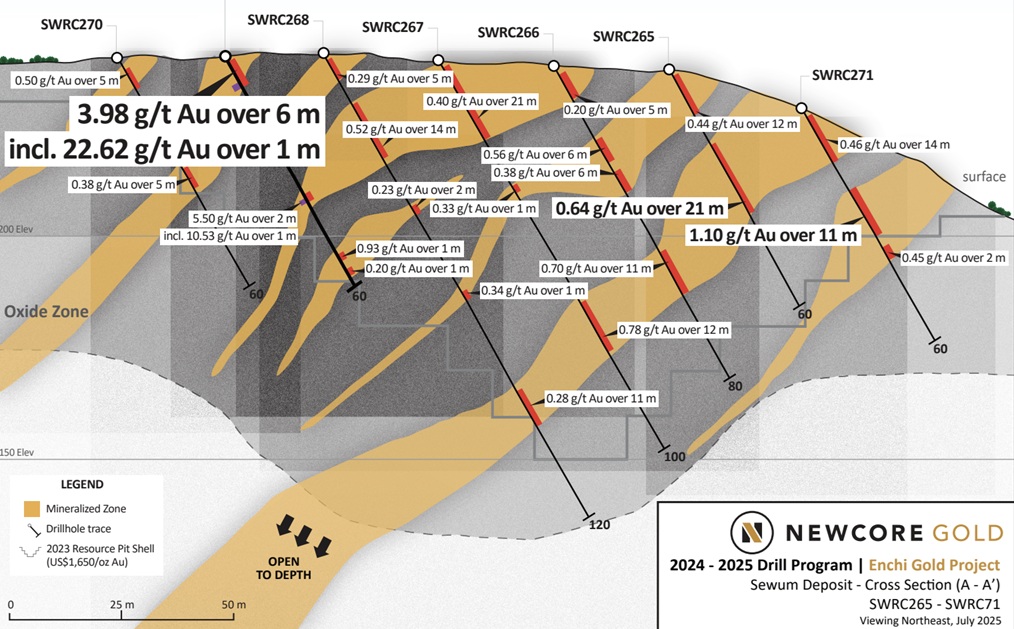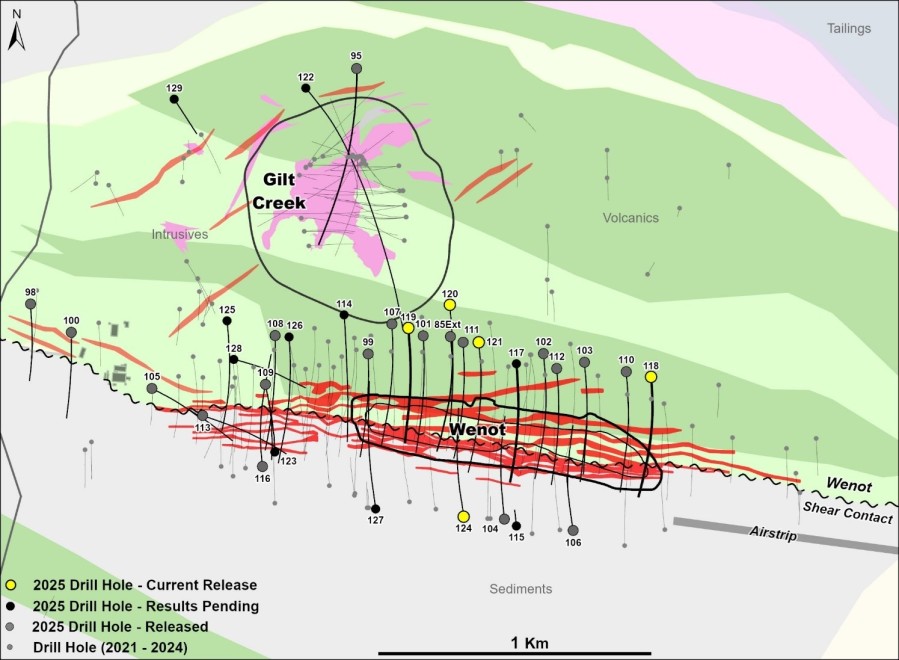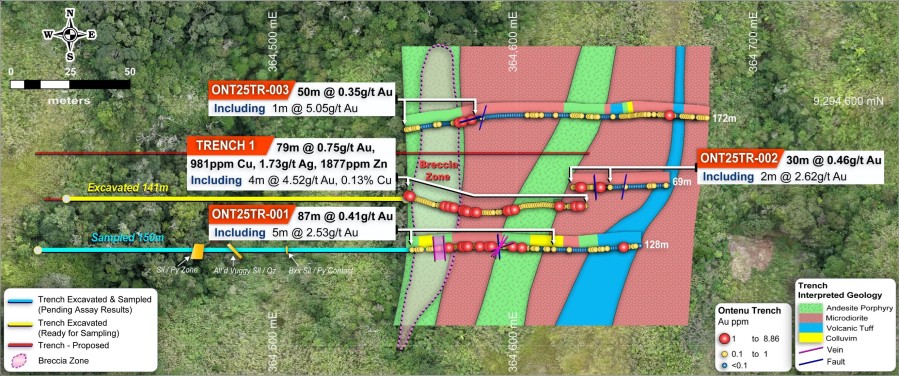OTTAWA, ONTARIO--(Marketwired - Feb. 1, 2017) - Focus Graphite Inc. (TSX VENTURE:FMS) (OTCQX:FCSMF) (FRANKFURT:FKC) ("Focus" or the "Company") is pleased to report initial Locked Cycle flotation Test1 (LCT) results from its 100%-owned Lac Tétépisca Graphite Project ("the Project") located southwest of the Manicouagan reservoir in the Côte-Nord administrative region of north-eastern Québec. The LCT was performed by SGS Canada Inc. (SGS) on a 155 kg Master composite graphite mineralization sample. Further open circuit cleaner testing was conducted on six variability graphite mineralization samples (total: 108 kg).
Highlights:
- The LCT produced an overall graphite recovery of 92.7% total Carbon2 (Ct)
- The average grades of the "jumbo" (+48 mesh) and "large" (-48/+80 mesh) flake categories were 95.6% Ct and 95.0% Ct, respectively
- The "medium" sized flakes (-80/+100 mesh) graded 96.3% Ct
- The "fine" flake products (-100/+200 mesh) yielded an average grade of 97.7% Ct
- These initial test results indicate that all concentrate size fractions above 400 mesh have a high carbon grade ranging from 95.0% Ct to 97.8% Ct. High carbon flake graphite concentrates translate into reduced levels of impurities to be removed during the purification process.
The principal objectives of the scoping level metallurgical test program were to design a conceptual flotation flowsheet that can upgrade the Lac Tétépisca graphite mineralization into a concentrate grading at least 96% Ct while minimizing flake size degradation.
The conceptual flowsheet was developed using results from a series of 14 flotation tests and the closed-circuit performance was evaluated in a LCT. The flotation test program was completed on a 155 kg Master composite and six variability samples (total: 108 kg) originating from representative Lac Tétépisca graphite mineralization. The LCT produced an overall graphite recovery of 92.7% at a combined concentrate grade of 96.2% Ct.
Focus President and CEO Gary Economo said: "These initial Locked Cycle flotation test results serve as an excellent starting point for future optimization of the conceptual Lac Tétépisca concentrator process flow sheet".
"Lac Tétépisca has the potential to meet our future supply obligations for graphite-based polymers for the automotive and other industries, whereas our flagship Lac Knife project's high purity concentrate production is planned for clean technology, renewable energy markets that require high quality coated spherical graphite," Mr. Economo added.
In 2014, Focus conducted a preliminary metallurgical characterization of a 10 kg composite channel sample of graphite mineralization from the Lac Tétépisca project. The metallurgical test work which was carried out at SGS in Lakefield, Ontario, achieved a carbon content averaging 94.7% Ct for all flake sizes above 200 mesh, including 97.7% Ct for +80 mesh flake - a quality that is critical to the lithium ion battery market (refer to Focus news release dated October 20, 2014 available at www.focusgraphite.com and at www.sedar.com).
The flake size distribution in the concentrate that was generated in the LCT using the 2016 Master composite is presented in Table 1. A total of 17.2% of the concentrate mass reported to the "jumbo" flake category (+48 mesh). The "large" flake category (-48/+80 mesh) contained 20.5% of the concentrate mass. Another 7.9% of the mass reported to the "medium" flake size fraction (-80/+100 mesh) (Table 1).
Interestingly, the finer flake size distribution classes (+400/-100 mesh) also reported carbon grades above 95% Ct.
| Table 1: Lac Tétépisca concentrate flake size distribution and total carbon (Ct) grades. | |||||
| Category | Size Fraction Mesh |
Size Fraction Microns |
Weight % |
Assays % Ct |
Distribution % Ct |
| Jumbo | +32 mesh | +500 | 4.2 | 95.8 | 4.1 |
| +48 mesh | +300 | 13.0 | 95.6 | 12.9 | |
| Large | +65 mesh | +212 | 13.5 | 95.0 | 13.4 |
| +80 mesh | +180 | 7.0 | 95.0 | 6.9 | |
| Medium | +100 mesh | +150 | 7.9 | 96.3 | 7.9 |
| Fine | +150 mesh | +106 | 13.0 | 97.8 | 13.2 |
| +200 mesh | +75 | 15.4 | 97.7 | 15.7 | |
| Very Fine | +325 mesh | +45 | 15.8 | 96.7 | 15.9 |
| +400 mesh | +38 | 3.6 | 95.2 | 3.6 | |
| -400 mesh | -38 | 6.6 | 92.9 | 6.4 | |
| Total: | 100.0 | 100.0 | |||
A total of six variability composites ranging from low-grade disseminated material grading 3.81% graphitic carbon2 (Cg) to high-grade massive mineralization grading 22.3% Cg produced consistent metallurgical results when subjected to the developed flowsheet conditions.
The combined concentrate grades for the six variability samples ranged from 95.4% Ct to 97.8% Ct with open circuit graphite recoveries of 84.9% to 91.6%.
The mass recovery into the "large" and "jumbo" flake categories for the six variability composites ranged between 31.8% for the massive mineralization composite, to 62.0% for the low-grade disseminated composite.
1 A Locked Cycle Test (LCT) is a repetitive batch flotation test conducted to assess flow sheet design. It is the preferred method for arriving at a metallurgical projection from laboratory testing. In a LCT the intermediate products are incorporated in the following cycles, thus simulating a continuous flotation circuit on a laboratory scale.
2 All carbon analyses were performed by SGS Canada Inc. ("SGS") and are reported as total carbon ("Ct"). The analytical methods that were used to determine the metallurgical results included total carbon analysis by Leco on the final concentrates. Total carbon assays are for the higher graphite concentrate grades, whereas graphitic carbon ("Cg") assays are for drill core and it is a more accurate method when graphitic carbon content is lower than approximately 50% Cg.
About SGS Metallurgical Services (Lakefield)
SGS Canada Inc. (SGS) is recognized as a world leader in the development of concentrator flowsheet design and pilot plant testing programs. SGS' Metallurgical Services division was founded over half a century ago. Its metallurgists, hydro-metallurgists and chemical engineers are experienced in all the major physical and chemical separation processes utilized in the recovery of metals and minerals contained in resource properties around the world.
Qualified Person
The information pertaining to the metallurgical test program completed by SGS that is presented in this news release has been reviewed and approved by Mr. Oliver Peters, M.Sc., P.Eng., MBA, Consulting Metallurgist for SGS Canada Inc. and Principal Metallurgist of Metpro Management Inc. Mr. Peters has extensive experience in the development of metallurgical processes and has managed the majority of the graphite testing programs conducted at SGS in recent years.
Mr. Marc-André Bernier, M.Sc., P.Geo. (Québec and Ontario), a Director of the Company and a Qualified Person under National Instrument 43-101 - Standards of Disclosure for Mineral Projects, has reviewed and approved the technical content of this news release relating to the Lac Tétépisca project metallurgical test results.
About the Lac Tétépisca Graphite Project
Focus Graphite's 100%-owned Lac Tétépisca Graphite Project consists of 87 contiguous map-designated claims ("CDC") covering 4,692.82 ha. The Project is located in the Southwest Manicouagan reservoir area, 234 km north-northwest of Baie-Comeau, an industrial city located where the Manicouagan River intersects the North shore of St. Lawrence River. The Project is accessible year-round by logging roads that connect to Highway 389, which in turn connects to Baie-Comeau.
Focus discovered graphitic mineralization at Lac Tétépisca as a result of prospecting and trenching work conducted in 2012 and in 2013. In 2014, the Company drilled 16 shallow holes along four fences spaced 200 m apart (total: 1,875 m). The drilling covered a 600 m strike length section of a 1.5-km long electromagnetic (EM) conductor mapped by a combined magnetic (MAG)-EM ground geophysical survey and now referred to as the "Manicouagan Ouest Graphitic Corridor" (MOGC). Eleven (11) holes intersected significant graphitic mineralisation including hole LT-14-04 which intersected 103.9 m (true thickness) grading 10.25% Cg (refer to Focus news releases August 17, 2016 available at www.focusgraphite.com and at www.sedar.com).
In 2016, Focus drilled an additional 18 holes (total: 2,424 m) to test the continuity of the graphitic mineralization within the MOGC with respect to the variability of graphitic carbon thickness and grades. Fifteen (15) holes intersected significant graphitic mineralization with grades ranging from 5.6% Cg to 19.35% Cg over a minimum true thickness of 6.2 m. Hole LT-16-32 intersected 102.1 m (true thickness) grading 10.7% Cg (refer to Focus news releases dated January 20, 2017 available at www.focusgraphite.com and at www.sedar.com).
A map of the Lac Tétépisca project is available on the Company's website at www.focusgraphite.com.





